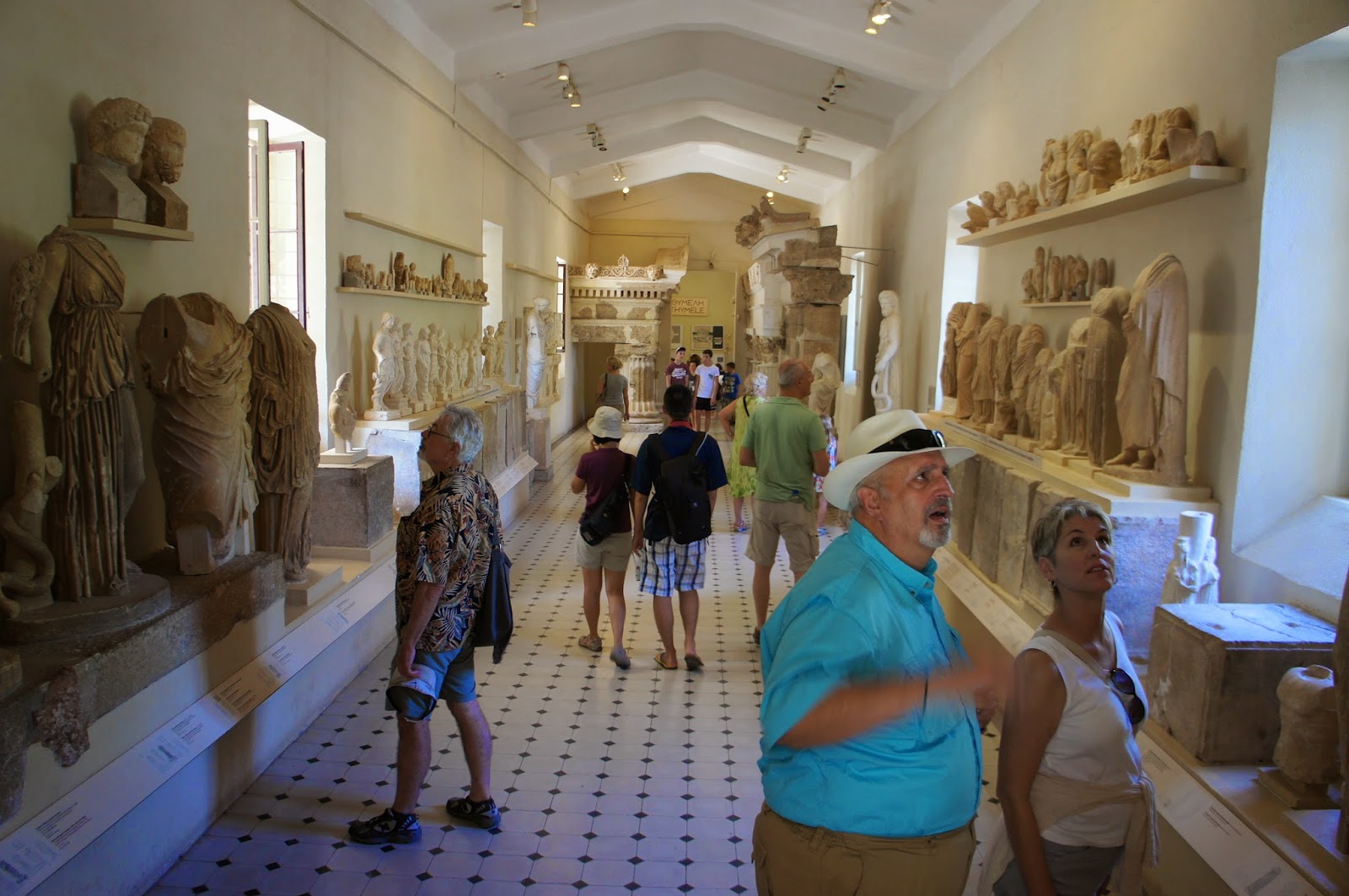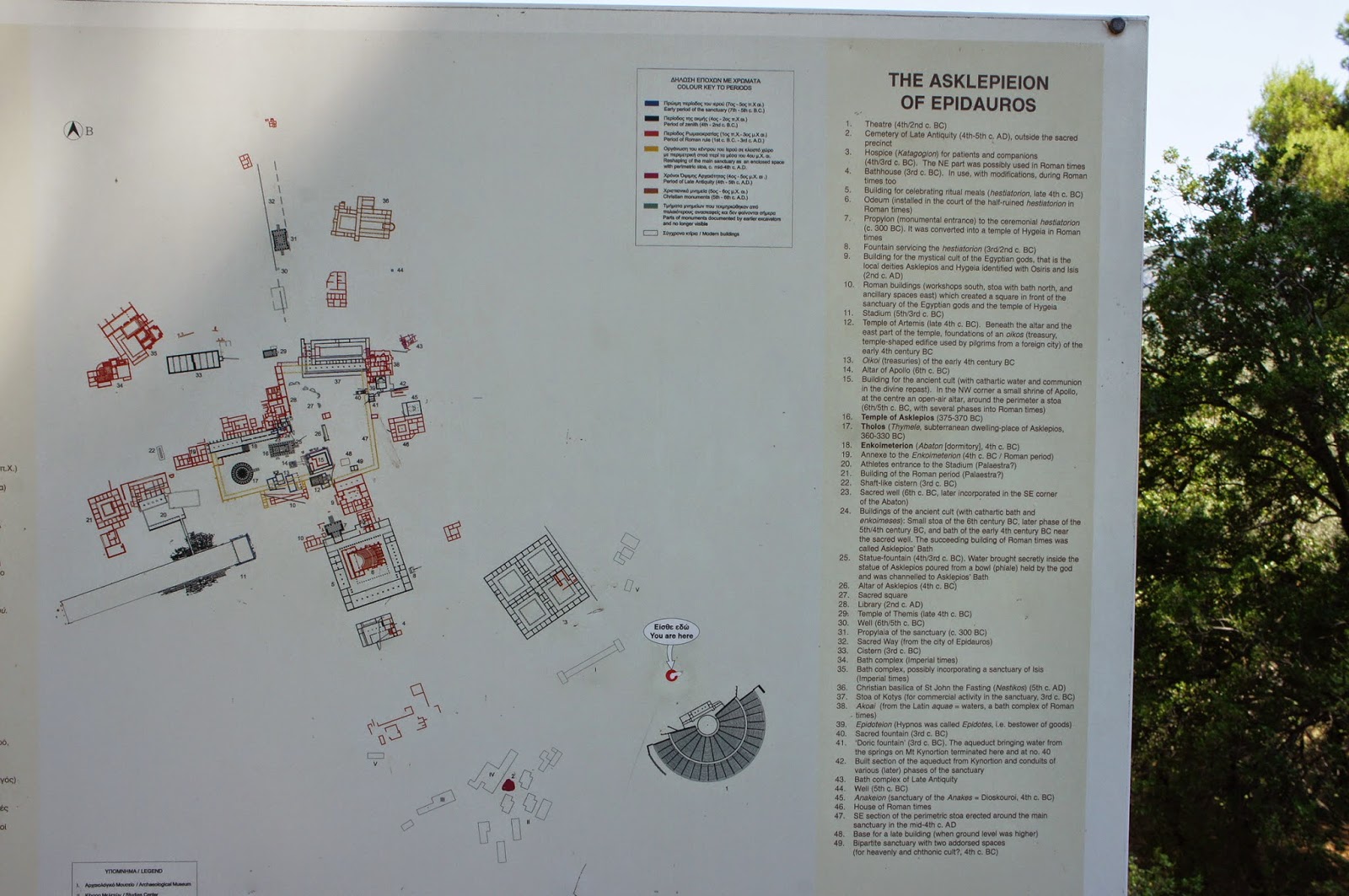The Corinth canal was just a short stop.
Next we head to
Epidaurus which was a small city (polis) in ancient Greece, at the Saronic Gulf. The highlight of this polis is the Epidaurus theatre.
Among all the ancient theatres, Epidaurus theatre is the most beautiful and best preserved. Destined for the fun of the patients of Asklipieio, it had a capacity of 13,000 spectators. It was divided into two parts: A 21-rows of seats part, aimed for the citizens and a 34-rows of seats part aimed for the priests and rulers.
Here are some pictures of the Epidaurus theatre.
 |
| Designed by Polykleitos the Younger late in the 4th century BCE, the theater is well known for its near perfect acoustics. |
 |
| It had a capacity for 13,000 spectators |
 |
| Epidaurus theatre is the most beautiful and best preserved. |
Epidaurus history
Epidaurus was a major city in Ancient Greece famed as a centre for healing. Inhabited since prehistoric times, Epidaurus thrived as a sanctuary devoted to the healing deities including Apollo, Asklepios and Hygeia and contained hundreds of spas, the remains of many of which can be seen today.
The main sanctuary area, called the Asklepieion, contains two such spas where a variety of healing rituals took place, including hypnosis. This was declared a UNESCO World Heritage site in 1988. There is also a shrine to Asklepios and the remains of rooms for patients.
Probably the most impressive of the sites at Epidaurus is the fourth century BC theatre, which was built to accommodate approximately 15,000 people and still extremely well preserved.
Whilst most of the sites at Epidaurus were constructed in the fourth and fifth centuries BC, when the city was at its peak, some of them date back as far as the Mycenaean period and others were also adapted later by the Romans. The theatre is one example of such refurbishments.



























